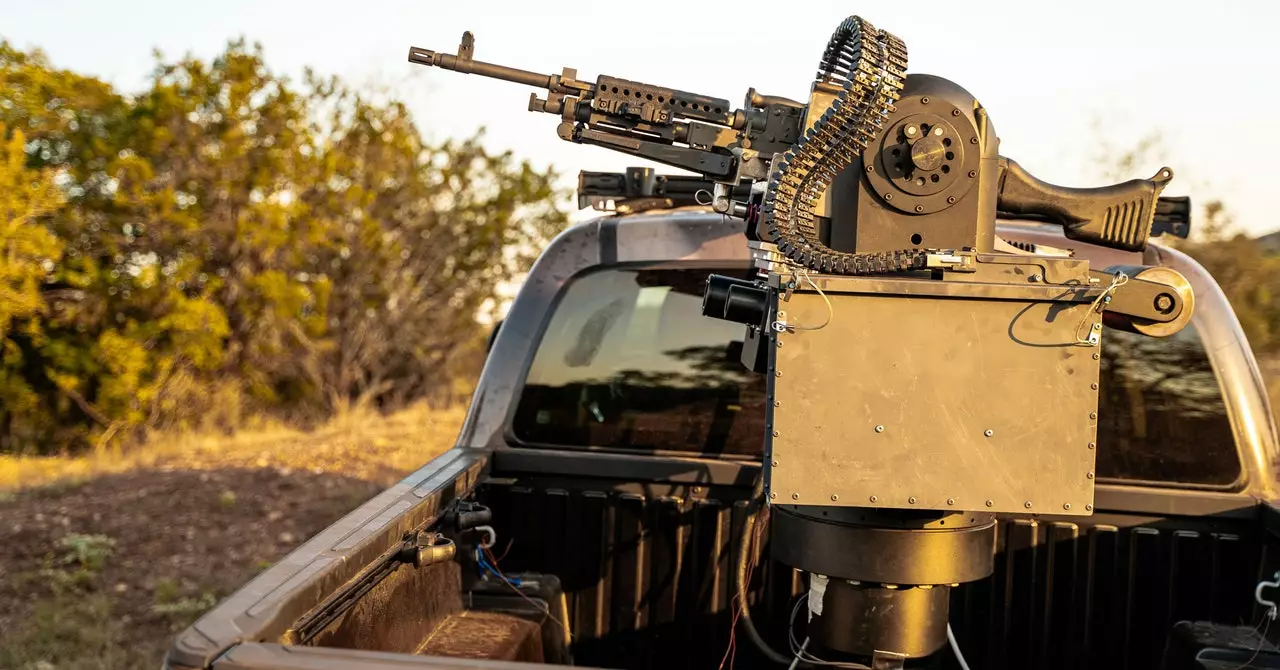The modern battlefield has dramatically shifted with the introduction of low-cost, weaponized drones that pose significant threats to military personnel. As these drones become increasingly prevalent, the United States military finds itself under pressure to enhance its defensive measures against such aerial assaults. The challenge lies not just in the face of these adversarial technologies but also in developing countermeasures that are both efficient and cost-effective. The Pentagon’s exploration into reinventing firearms through advanced technologies highlights a critical adaptation to emerging combat scenarios, one that could reshape the strategies employed in modern warfare.
At the forefront of this effort is the “Bullfrog,” an innovative robotics system developed by Allen Control Systems. This artificial intelligence-enabled autonomous gun is not simply a variation of existing weaponry but represents a paradigm shift in how the military approaches drone engagement. By integrating a machine gun with advanced technological capabilities, the Bullfrog provides a glimpse into the future of automated defense systems. Its design incorporates a rotating turret and electro-optical sensors that, working in tandem with AI and computer vision, allow for significantly improved accuracy in targeting drones compared to traditional firearms like the M4 carbine or the XM7 rifle.
The Bullfrog’s interface highlighted during the Technology Readiness Experimentation (T-REX) event demonstrated its capabilities to lock onto fast-moving aerial targets and efficiently neutralize them with minimal rounds. This success not only illustrates the efficacy of the weapon but also suggests a new potential standard for drone defense within the military. As noted by DOD officials, the initial tests have been promising enough to warrant further investigation into its integration within military operations.
Engaging small drones with conventional weapons has proven to be a daunting task even for the most skilled marksmen. The military’s ongoing quest to enhance small arms efficacy against drones reflects a broader strategy to modernize its approach to aerial threats. Current initiatives include the development and procurement of specialized munitions, including novel “buckshot-like” ammunition intended to mimic the effectiveness of shotguns used in various conflict zones. Additionally, the exploration of integrated counter-drone capabilities, such as rifle-mounted jammers, highlights a proactive stance on neutralizing aerial threats.
Yet, the complexity of small drone rapidly approaching in hostile environments necessitates a nuanced and technologically sophisticated counter-response, one capable of keeping pace with the advanced nature of these threats. Traditional methods may not be sufficient, marking the importance of programs like the Bullfrog in redefining the military’s arsenal.
In tandem with technological innovations, the military has recognized the need for training initiatives focused on counter-drone strategies. By embedding counter-drone exercises into basic training routines, the military is adapting its instructional methodology to better prepare soldiers for these new challenges. This shift emphasizes the importance of integrating cutting-edge technology with traditional marksmanship techniques, ensuring that service members are equipped to handle diverse threats on the battlefield.
Moreover, companies specializing in smart optics and target-lock technologies are increasingly collaborating with military trainers to develop comprehensive training systems that support the growing complexities of drone warfare. These collaborations signal a broader shift in military training that leverages technological advancements to augment human capabilities.
As the Pentagon continues to explore the potential of systems like the Bullfrog, ethical considerations surrounding the deployment of autonomous weapons become urgent. The implications of introducing lethal autonomous systems raise questions about accountability and the decision-making processes involved in combat. Ensuring that robust controls are in place will be vital to align these technological advancements with established military ethics.
Ultimately, the pursuit of integrating AI-driven solutions within the military’s framework signifies a significant turning point in how warfare is conducted. By embracing both technological innovation and updated training methodologies, the U.S. military is poised to navigate the complexities of future conflicts effectively. As we move forward, the balance between innovation, ethics, and effectiveness will shape the ever-evolving landscape of military engagement in the drone era.

